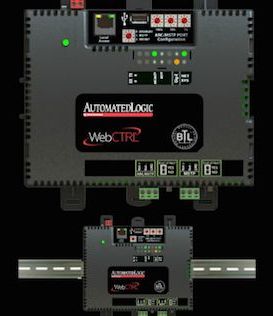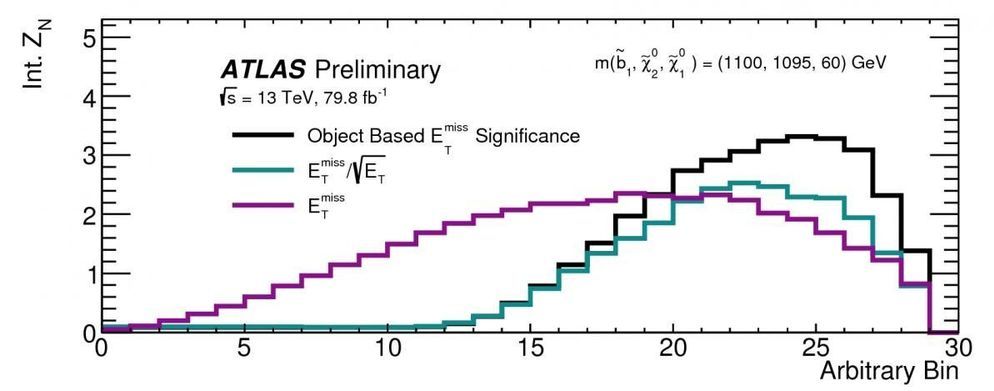ALC’s new OptiFlex virtual integrator has been named the winner of the AHR Expo Innovation award in the building automation category.
5:30 pm.



Dark matter is an unknown type of matter present in the universe that could be of particle origin. One of the most complete theoretical frameworks that includes a dark matter candidate is supersymmetry. Many supersymmetric models predict the existence of a new stable, invisible particle called the lightest supersymmetric particle (LSP), which has the right properties to be a dark matter particle.
The ATLAS Collaboration at CERN has recently reported two new results on searches for an LSP that exploited the experiment’s full Run 2 data sample taken at 13 TeV proton-proton collision energy. The analyses looked for the pair production of two heavy supersymmetric particles, each of which decays to observable Standard Model particles and an LSP in the detector.

A new finding puts the half-life of xenon 124 close to 18 sextillion years.
That’s 18,000,000,000,000,000,000,000.
Existing theory predicts the isotope’s radioactive decay has a half-life that surpasses the age of the universe “by many orders of magnitude,” but no evidence of the process has appeared until now.
A googolplex is 1010^100, where the exponents are solved from the right. The exponentiation symbol (^) means the number just to the left multiplied by the left number’s self the number just to the right number of times. If the left number is 10, that means 1 followed by the right number of zeros. That is 10googol=1010,000,000,000,000,000,000,000,000,000,000,000,000,000,000,000,000,000. So the answer to your question is a-googolplex-and-1=(1010^100)+1.
Circa 2018
A moss capable of removing arsenic from contaminated water has been discovered by researchers from Stockholm University. And it happens quickly — in just one hour, the arsenic level is so low that the water is no longer harmful for people to drink. The study has been published in the journal Environmental Pollution.
The aquatic moss Warnstofia fluitans, which grows in northern Sweden, has the ability to quickly absorb and adsorb arsenic from water. The discovery allows for an environmentally friendly way to purify water of arsenic. One possible scenario is to grow the moss in streams and other watercourses with high levels of arsenic.
Water in mining areas often contaminated
In the northern part of Sweden, water from mining areas is often contaminated by arsenic.

The results are fascinating and spur the imagination, but don’t start investing in flux capacitors yet. This experiment also shows us that sending even a simulated particle back in time requires serious outside manipulation. To create such an external force to manipulate even one physical particle’s quantum waves is well beyond our abilities.
“We demonstrate that time-reversing even ONE quantum particle is an unsurmountable task for nature alone,” study author Vinokur wrote to the New York Times in an email [emphasis original]. “The system comprising two particles is even more irreversible, let alone the eggs — comprising billions of particles — we break to prepare an omelet.”
A press release from the Department of Energy notes that for the “timeline required for [an external force] to spontaneously appear and properly manipulate the quantum waves” to appear in nature and unscramble an egg “would extend longer than that of the universe itself.” In other words, this technology remains bound to quantum computation. Subatomic spas that literally turn back the clock aren’t happening.


In the popular movie franchise “Back to the Future”, an eccentric scientist creates a time machine that runs on a flux capacitor.
Now a group of actual physicists from Australia and Switzerland have proposed a device which uses the quantum tunneling of magnetic flux around a capacitor, breaking time-reversal symmetry.
The research, published this week in Physical Review Letters, proposes a new generation of electronic circulators, which are devices that control the direction in which microwave signals move.